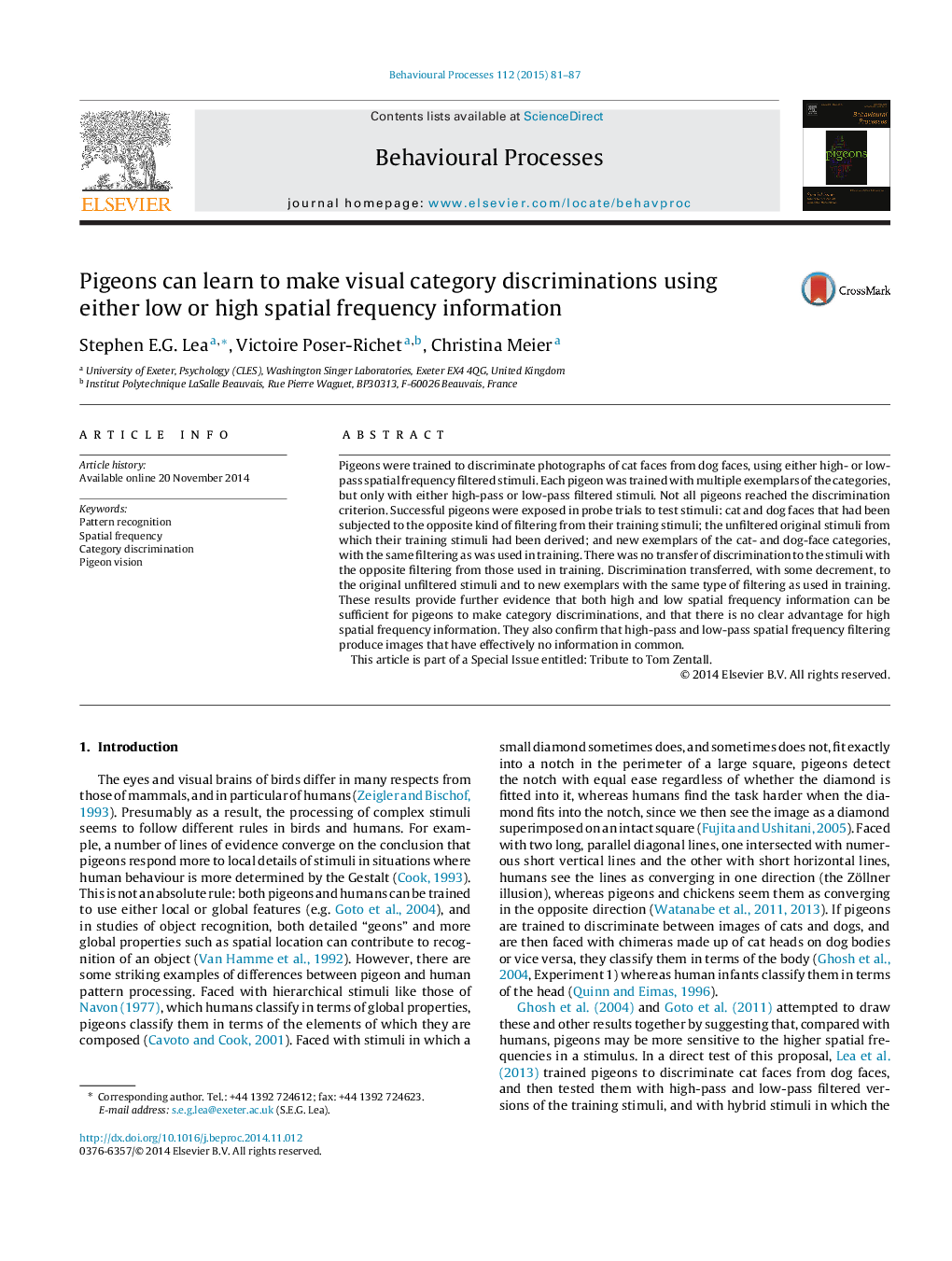| Article ID | Journal | Published Year | Pages | File Type |
|---|---|---|---|---|
| 2426637 | Behavioural Processes | 2015 | 7 Pages |
•Pigeons can discriminate cat from dog faces despite spatial-frequency filtering.•The discrimination transferred to novel photographs with the same filtering.•The discrimination transferred to unfiltered images.•Discrimination based on high frequencies did not transfer to low frequencies.•Discrimination based on low frequencies did not transfer to high frequencies.
Pigeons were trained to discriminate photographs of cat faces from dog faces, using either high- or low-pass spatial frequency filtered stimuli. Each pigeon was trained with multiple exemplars of the categories, but only with either high-pass or low-pass filtered stimuli. Not all pigeons reached the discrimination criterion. Successful pigeons were exposed in probe trials to test stimuli: cat and dog faces that had been subjected to the opposite kind of filtering from their training stimuli; the unfiltered original stimuli from which their training stimuli had been derived; and new exemplars of the cat- and dog-face categories, with the same filtering as was used in training. There was no transfer of discrimination to the stimuli with the opposite filtering from those used in training. Discrimination transferred, with some decrement, to the original unfiltered stimuli and to new exemplars with the same type of filtering as used in training. These results provide further evidence that both high and low spatial frequency information can be sufficient for pigeons to make category discriminations, and that there is no clear advantage for high spatial frequency information. They also confirm that high-pass and low-pass spatial frequency filtering produce images that have effectively no information in common.This article is part of a Special Issue entitled: Tribute to Tom Zentall.
